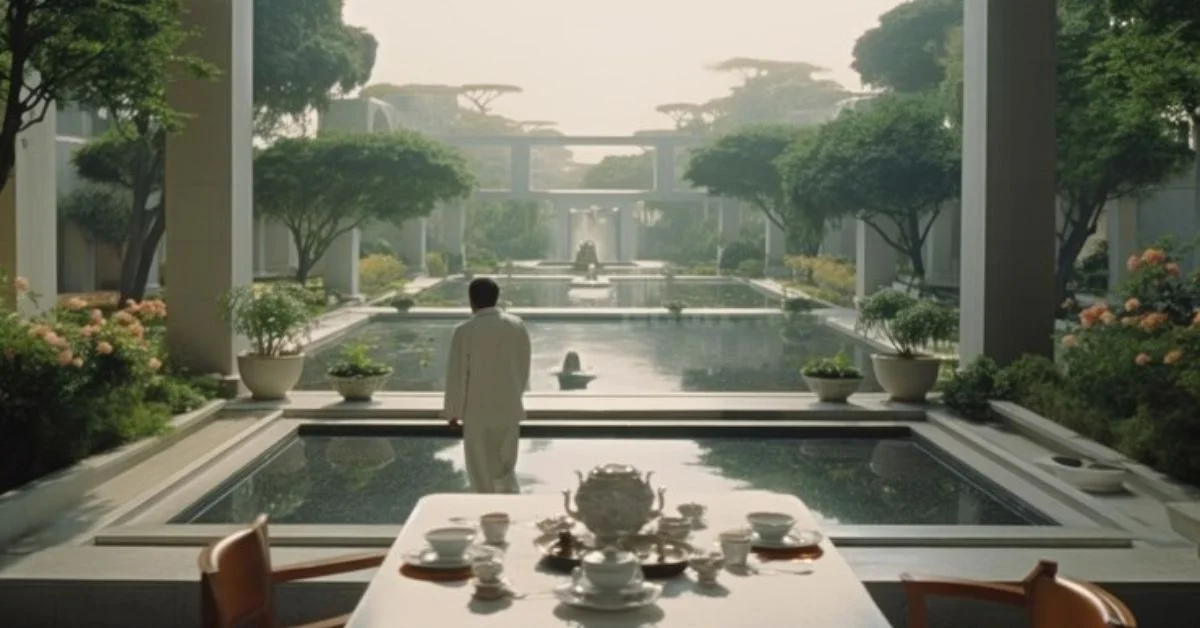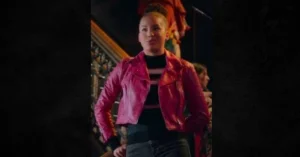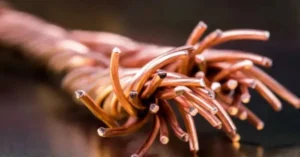In the shifting balance between built environments and natural systems, few names in modern design have come to symbolize harmony quite like Roger Morph. As the principal landscape designer at KDArchitects, Morph has spent the past decade reshaping how the urban class interacts with their outdoor environments. His work—spanning rooftop gardens in San Francisco to desert courtyards in Dubai—isn’t merely aesthetic. It’s philosophical, ecological, and increasingly, existential.
As climate pressures mount and cities densify, Morph’s approach to landscape design, infused through the creative lens of KDArchitects, offers a timely answer: landscapes that are not ornamental afterthoughts, but integral frameworks for how we live, breathe, and move.
In this article, we explore the landscape design ethos behind KDArchitects under Morph’s leadership, the innovative ideas driving their work, and what they reveal about the evolving meaning of outdoor space in the 21st century.
Who Are KDArchitects?
KDArchitects is a multidisciplinary design firm with a footprint in architecture, urban planning, and sustainable design. Founded in Copenhagen in 2009 and now headquartered in both Amsterdam and Los Angeles, the firm is known for its fusion of Scandinavian minimalism and ecological rigor.
But in 2016, something changed. Roger Morph joined as director of landscape design, and since then, the outdoor environments of KDArchitects’ projects have become just as celebrated as their interior forms.
Enter Roger Morph: Design Philosopher in Soil
Tall, soft-spoken, and often seen sketching in public parks, Roger Morph is not your typical high-profile designer. Educated in botany before pivoting to landscape architecture at the Rhode Island School of Design, Morph views every project not as a canvas, but as an ecosystem.
“Design isn’t about placing things,” he says. “It’s about listening to what the land is asking for and responding with humility.”
Morph’s signature style blends native planting palettes, passive water systems, fractal geometry, and cultural references—often drawn from literature or music—into outdoor spaces that evoke emotion as much as admiration.
Signature Landscape Ideas by Roger Morph
1. The “Living Corridor” Concept
Morph’s most influential design theory to date is the Living Corridor—a landscape system that blends movement, biodiversity, and spatial rhythm. Unlike the traditional garden path, Morph’s corridors are layered with functionality:
- Canopy layers (native trees and vertical greens)
- Mid-story hedging (for privacy and microclimate control)
- Permeable ground layers (for drainage and soil health)
- Pollinator zones (designed to attract bees, butterflies, and birds)
These corridors are not just transitional spaces but micro-biomes where humans and nature cohabitate.
Case in point: The Redwood Loop Housing Project in Northern California, where Morph embedded corridors between residential modules. Within 12 months, bird populations increased by 40%, and homeowner surveys reported an increase in mental well-being scores.
2. Rain as a Resource
A recurring theme in Morph’s work is the celebration of rain, particularly in regions where water is either scarce or underappreciated.
In his “Rain Atlas Courtyards,” downspouts are visible, not hidden—designed as part of the visual language. Rain gardens collect runoff for greywater reuse. Morph’s detailing often includes engraved paving stones with poetry that only appears when wet.
This merging of function and poetics exemplifies his belief that climate-responsive design can also be emotionally resonant.
3. Silence Gardens
In response to urban overstimulation, Morph developed the Silence Garden typology—outdoor spaces specifically designed to reduce cognitive noise. These gardens use:
- Sound-absorbing berms and plant clusters
- Textural pathways to slow foot traffic
- Subdued, cool-toned planting schemes
- Circular seating to discourage digital distraction
Originally prototyped in Berlin in 2021, these spaces have since been adopted in hospitals, office campuses, and even prisons, where their therapeutic effects have been documented.
KDArchitects and the Role of Landscape in Architecture
Morph’s impact at KDArchitects is not confined to exteriors. Under his influence, the firm now treats landscape design as a co-authoring force—brought into projects from Day 1.
For example, in the Horizon Civic Library Project in Singapore, the building footprint was reduced by 15% to preserve a native banyan tree. That decision led to a multi-use outdoor classroom space under the tree’s canopy, now used daily by local schools.
“We stopped designing buildings first and fitting nature around them,” says Lina Grosh, KDArchitects’ senior architect. “Now, nature is the brief.”
Sustainability Beyond Greenwashing
While many firms boast about LEED scores and native plants, Morph and his team dig deeper. Every KDArchitects project now undergoes a Landscape Integrity Audit—an internal review process assessing:
- Ecological net gain (Is the landscape better off after construction?)
- Water cycle resilience
- Cultural relevance of plant species
- Maintenance energy cost over a 20-year horizon
One of their most recent projects in Qatar involved reintroducing five nearly extinct desert shrubs using seed banks and microclimate manipulation—turning what would have been a decorative plaza into a functional seed sanctuary.
New Frontiers: Rooftop Biomes and Vertical Parks
As urban land becomes scarce, Morph’s team is looking skyward. At the KDArchitects experimental design lab in Rotterdam, engineers and botanists are collaborating on vertical park modules that combine:
- Shade-tolerant plant species
- Smart irrigation controlled by solar panels
- Human pathways integrated with garden balconies
These systems are being prototyped for high-rise buildings in Tokyo and São Paulo, where outdoor space is measured in inches, not acres.
The firm believes these vertical biomes can restore green equity in dense urban cores where only the wealthy traditionally access green space.
The Emotional Landscape: Why Morph’s Designs Feel Alive
What truly sets Morph apart is not just sustainability or aesthetics—it’s how his landscapes make people feel.
One visitor to a Morph-designed park in Oslo described it as “feeling hugged by the earth.” Another, a cancer patient in a Boston hospital with a Morph-designed garden, said, “It’s the only place where I don’t feel sick.”
“We live in times of disconnection,” Morph says. “If a tree, a path, or a shadow can give someone a moment of belonging, that’s design at its highest form.”
Educational Outreach and Public Design
Morph is also reshaping how the public understands landscape. Through KDArchitects, he co-founded The Civic Canopy, a traveling exhibition and pop-up workshop series that visits underserved communities, inviting residents to co-design public greenspaces with local government and artists.
Each workshop ends with an Open Planting Ceremony, where attendees plant the first trees or herbs for a park, trail, or school garden. These events have become community rituals, reinforcing the idea that landscape belongs to everyone.
Notable Projects
1. The Water Table Pavilion – Copenhagen
A sculptural public square where stepping stones adjust with tidal shifts. Acts as a flood basin and outdoor amphitheater.
2. The Mesa Grove Commons – Arizona
A sunken orchard integrating windbreaks, water capture, and heat mitigation. Inspired by Ancestral Puebloan agriculture.
3. The Sky Park on 7 – New York City
An elevated, 3-block green space atop a residential tower. Includes medicinal herb gardens accessible to the community clinic below.
Challenges and Criticisms
Even with accolades, Morph’s work is not immune to critique:
- High upfront costs: His landscapes often cost more initially due to soil amendment, rare species sourcing, or custom irrigation. Critics argue this limits accessibility for mid-tier clients.
- Maintenance complexity: Some municipalities have struggled to upkeep the nuanced ecosystems Morph designs, leading to debates over practicality versus poetry.
- Aesthetic divergence: Not all clients resonate with the “wild” look of native or non-linear gardens.
Still, KDArchitects has remained steadfast, offering maintenance training and phased implementation strategies to make these designs viable long-term.
The Future of Landscape Design According to Roger Morph
What’s next for Morph? As of 2025, he is leading a KDArchitects initiative called BioLoop—a design research project focused on landscapes that can self-heal using fungal networks, adaptive soil biomes, and migratory pollination corridors.
He’s also advocating for Landscape as Policy—encouraging cities to legislate landscape zones not just as optional beautification, but as critical infrastructure.
“We have roads, pipes, wires—and now we need roots,” he says. “Not metaphorically. Literally.”
Final Thoughts
In an age of uncertainty—climate anxiety, urban sprawl, and a digital disconnect from the natural world—KDArchitects landscape ideas by Roger Morph offer more than design. They offer an ethic.
They tell us that green space is not a luxury. That a bench under a tree can be as important as a balcony view. That the soil beneath our feet is not inert but alive—and that in designing for it, we design better lives for ourselves.
As cities grow taller and technology grows faster, Morph’s work reminds us of a simple truth: nature is not the past of cities, but their future.
For more information, click here.









